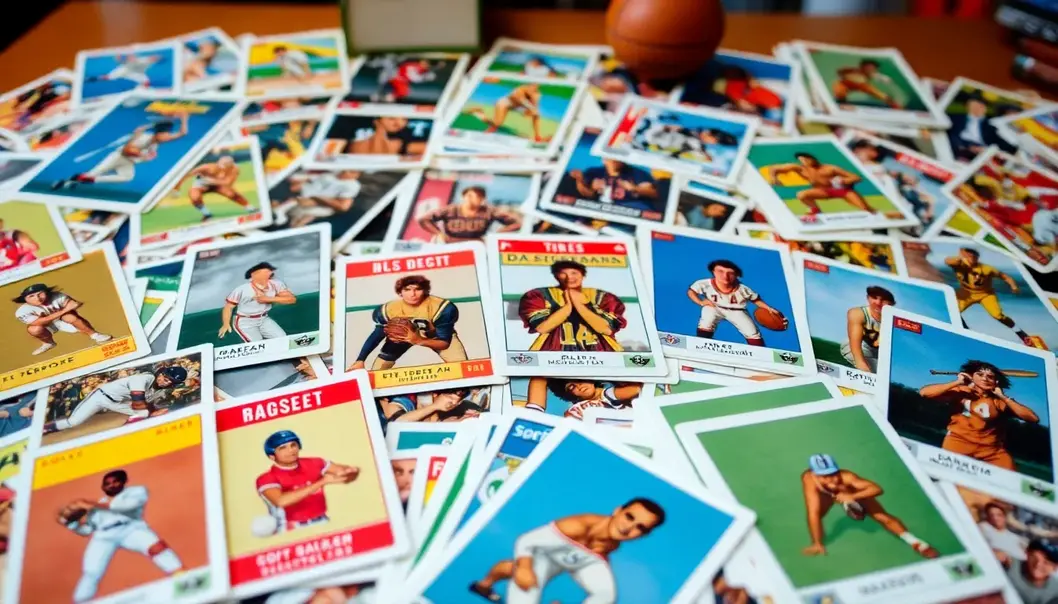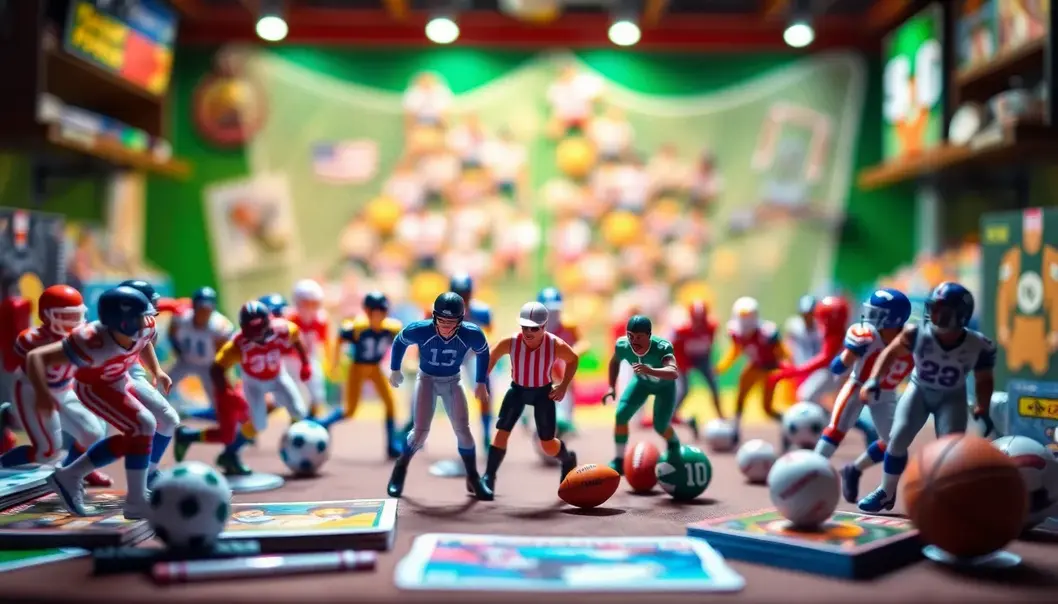Toys have often transcended their realms to influence trends far beyond the playroom, even spilling onto iconic sports arenas. From action figures that echo the discipline of competitive sports to collectibles that unite passionate fan bases, these toys have morphed into symbols of cultural shifts. For sports fans, understanding these trends offers an intriguing glance into how childhood play has shaped entertainment and competitive landscapes. This exploration digs into the marriage of toys and sports culture, illustrating the profound connections and unforgettable moments made possible by these innocuous playthings.
Transforming Heroes: The Rise of Action Figures and Sports Icons
![]()
In the vibrant world of toys, action figures have emerged as a significant cultural touchstone. When they first emerged, action figures primarily revolved around fantasy genres, but they swiftly evolved to include figures representing real-world sports heroes. These tangible representations of sporting excellence allowed children to connect with their idolized athletes on a more personal level. Through action figures, young enthusiasts could hold a piece of their dreams, dream bigger, and aspire to replicate the feats of their heroes on the field or court.
The artistry and craftsmanship that went into creating these figures were nothing short of inspirational. The successful design of a sports hero action figure extended beyond mere visual accuracy. They needed to capture the essence and dynamic energy of real athletes. From the poised stance of a golfer about to swing to the intense focus of a basketball player mid-dunk, these figures encapsulated moments of victory and perseverance. Each one told a story, inviting children to imagine their own heroic tales in their bedrooms and backyards.
Marketing techniques further propelled the popularity of action figures in the sports realm. Collaborations between toy companies and sports leagues effectively created cross-promotional opportunities that integrated these toys into broader cultural narratives. By aligning toys with major sporting events and household sports names, manufacturers ensured these figures became indispensable keepsakes within the sports community. Effective marketing campaigns often highlighted not just the toys, but also the admirable qualities of the athletes they portrayed, fostering a deeper connection with youthful fans.
Culturally, action figures have had a profound impact on the aspirations of young sports enthusiasts. The manner in which these figures mirror societal values associated with sportsmanship, teamwork, and determination cannot be understated. They became more than mere playthings—they were conduits through which values were communicated. This influence often extended into young players’ lives, shaping their understanding of what it meant to succeed both on and off the field. Moreover, these figures offered more than just fun; they provided comfort and a sense of belonging to children who saw themselves in their favorite athletes.
Action figures have thus played an integral role in bridging the gap between youthful imagination and the world of professional sports. They served as both an entry point and a bridge, fostering early and lasting connections to the sports world. As we continue our exploration into the universe of toys that have sparked cultural revolutions, it’s important to recognize the enduring power of these figures. They still resonate with fans of all ages, rooting them in their dreams while inspiring future generations of sports legends.
Collectibles Converging with Culture: Trading Cards and Fan Fervor

The allure of trading cards lies not only in their glossy surfaces but in the stories they tell. These humble rectangles of cardboard have fascinated sports enthusiasts for generations, bridging the gap between youthful play and deep-seated fandom. From vintage-era sepia tones to today’s holographic bursts, trading cards showcase an evolution that mirrors the changing face of sports culture itself.
Initially seen as child’s play, trading cards contained within their packs not only paper-thin slices of athletes’ visages but also seeds of fervent fan culture. The history embedded in their borders is palpable—an unintended chronicling of sports moments captured and immortalized. Each card carries a narrative, whether it’s the subtle pride of a rookie debut or the whispered thrill of witnessing a career-defining championship.
Design trends have followed cultural tides, mirroring shifts in artistic styles and technological advances. Early editions boasted simplistic designs, focusing on just the essentials: player name, team, and a resonating image. As time progressed, cards adopted bold colors and intricate fonts, taking cues from broader cultural movements. Today, they often include features like statistics, player bios, and even game-worn memorabilia. This transformation underscores trading cards as cultural artifacts, visible touchstones of both athletic and artistic progress.
The quest for rare finds remains a cornerstone of collecting culture. The exhilaration of pulling a coveted card from a pack can only be matched by the strategic trades made within schoolyard circles or the avid bidding in online forums. This pursuit of rarity fuels a distinct kind of community, one where young collectors and seasoned hobbyists share tales of triumph and near-miss acquisitions.
Much like pieces of a grand mosaic, trading cards contribute to the broader canvas of sports history, celebrating personalities and pivotal achievements. They offer a medium through which personal memories intertwine with sporting milestones. This synchronization between collectibles and culture fosters a unique appreciation of sports narrative—an intersection of leisure and reverence.
In collecting cards, aficionados participate in a tradition that transcends the tactile, creating an enduring link between playful exploration and passionate fandom. They are more than mere tokens of a child’s pastime; they are emblematic, bridging generations of fans through shared stories and collective admiration. Such collections not only serve as a portal to the past but are also a reflection of an enduring legacy, illustrating the symbiotic relationship between sports and the fans who revere them.
Final words
From action figures to trading cards, toys have profoundly impacted sports culture. They’re not just relics; they’re bridging generational gaps and storytelling mediums that immortalize athletic greatness. As sports fans, recognizing this influence offers deeper appreciation for these collectibles’ roles in shaping the world we cheer for so passionately.
Uncover more cultural insights and collectibles at our Toy Legacy Festival. Get inspired by the evolution of toys in sports culture!
Learn more: http://toylegacyfestival.com
About us
The Toy Legacy Festival is a unique event bringing together collectors, enthusiasts, and historians to celebrate and explore the profound impact of toys on culture, including sports. Featuring exhibitions, workshops, and interactive sessions, the festival offers a deep dive into the nostalgia and future of collectible toys. Join us to celebrate these iconic cultural pillars!



